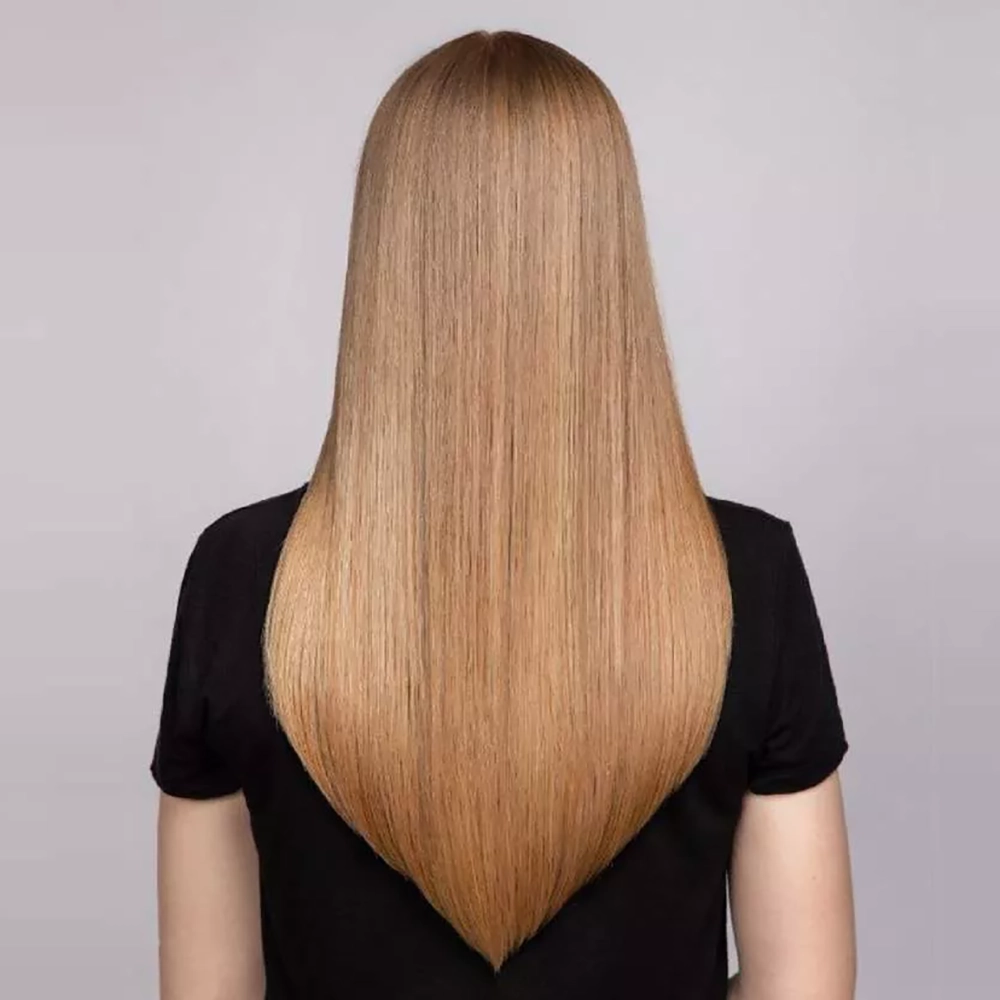Genetic Factors in Premature Graying
Premature graying of hair is a common concern among individuals of all ages. While it is often believed to be an inevitable part of the aging process, some people experience gray hair earlier in life. This phenomenon, known as premature graying, can be attributed to various factors, one of which is genetics.
Genetic Predisposition
The color of our hair is determined by a pigment called melanin. As we age, the cells responsible for producing melanin gradually decrease, resulting in the graying of hair. However, in individuals with a genetic predisposition to premature graying, this process occurs at a younger age. Research suggests that specific genes, such as the one encoding the melanocortin 1 receptor (MC1R), play a significant role in determining the onset of premature graying. Variations in these genes can contribute to the early depletion of melanin-producing cells, causing hair to turn gray prematurely.
Family History
A notable indicator of whether you may experience premature graying is your family history. If your parents or close relatives experienced gray hair at an early age, there is a higher likelihood that you may also develop premature graying. The inheritance of certain gene variants associated with melanin production and regulation can result in earlier graying. While genetics may not be the sole factor responsible for premature graying, it certainly has a significant impact on its occurrence.
Coping with Genetic Factors
Understanding the genetic factors involved in premature graying can help individuals better cope with its effects. While it is not currently possible to alter our genetic makeup, there are ways to manage and embrace gray hair. Some individuals choose to embrace their natural hair color gracefully, while others may opt for hair dyes or other cosmetic solutions. Regardless of your approach, it is essential to remember that premature graying does not define your beauty or personality. Embracing your unique features and taking care of your overall well-being can contribute to a positive mindset and confidence.
In conclusion, genetics play a crucial role in the occurrence of premature graying. Understanding the genetic factors involved can help individuals address their concerns and find ways to embrace their natural hair color. By focusing on overall well-being and self-acceptance, premature graying can be perceived as a natural part of life’s journey rather than a cause for distress.
Smoking and Premature Gray Hair
Smoking has long been associated with numerous health issues, such as cancer, heart disease, and respiratory problems. However, recent studies have also suggested a link between smoking and premature gray hair. While it is a common belief that hair turns gray as a result of aging, there is growing evidence to suggest that certain habits, including smoking, can accelerate the graying process.
The exact mechanism behind the relationship between smoking and premature gray hair is not yet fully understood. However, it is believed that the harmful chemicals found in cigarettes can damage the hair follicles and disrupt the production of melanin, the pigment responsible for hair color. Nicotine, carbon monoxide, and other toxins in tobacco smoke can lead to oxidative stress and inflammation, which can affect the melanocytes, the cells that produce melanin in the hair shaft.
Furthermore, studies have shown that smokers are more likely to develop oxidative stress, which can further contribute to premature gray hair. Oxidative stress occurs when there is an imbalance between the production of free radicals, which are highly reactive molecules, and the body’s ability to neutralize them with antioxidants. Smoking can deplete the body’s antioxidant levels, making individuals more susceptible to oxidative stress.
While genetics play a significant role in determining when and how quickly a person’s hair turns gray, smoking can accelerate this process. Several studies have found a correlation between smoking and premature gray hair, with smokers being more likely to have gray hair at a younger age compared to non-smokers. In fact, a study published in the Journal of the American Academy of Dermatology found that smokers were 2.5 times more likely to have gray hair before the age of 30.
It is important to note that quitting smoking may not reverse the graying process. However, quitting smoking can help improve overall hair health and reduce further damage to the hair follicles. By quitting smoking, individuals can reduce their risk of developing premature gray hair and improve their overall well-being.
So, if you are concerned about premature gray hair, consider quitting smoking for the sake of not only your hair but also your overall health. Remember, it is never too late to make positive changes for a healthier and more vibrant life.
Role of Stress in Premature Graying
Stress is an unavoidable part of life, but did you know that it can also contribute to premature graying of hair? Yes, you read that right. Several studies have suggested a strong connection between stress and the early onset of gray hair. While our hair naturally turns gray as we age due to a decrease in melanin production, excessive stress can speed up this process, causing us to gray prematurely. So, how exactly does stress affect our hair? Let’s dive deeper into the role of stress in premature graying.
First of all, it’s important to understand how our hair gets its color. The pigment responsible for giving our hair its natural color is called melanin. Melanocytes, the specialized cells in our hair follicles, produce melanin. As we get older, the production of melanin decreases, resulting in gray or white hair. However, stress can disrupt this process and accelerate the loss of melanin. When our body is under stress, it releases a hormone called cortisol. High levels of cortisol can have a detrimental effect on our hair follicles, leading to premature graying.
In addition to cortisol, stress can also impact the overall health of our hair. When we’re stressed, our body goes into a fight-or-flight mode, diverting its resources away from less critical functions such as hair growth. This can disrupt the normal hair growth cycle and result in weakened hair strands. Weak hair is more prone to breakage and damage, which further contributes to the appearance of gray hair.
So, how can we manage stress to prevent premature graying? There’s no one-size-fits-all answer to this question, as everyone copes with stress differently. However, incorporating stress management techniques into our daily routine can help reduce its impact on our hair and overall well-being. Some effective stress management techniques include exercise, meditation, deep breathing exercises, and getting plenty of rest and sleep. It’s also crucial to identify and address the underlying causes of stress in our lives.
- Exercise regularly: Engaging in physical activity releases endorphins, which are known as “feel-good” hormones. Regular exercise can not only reduce stress but also improve our overall health.
- Meditation and deep breathing exercises: Practicing mindfulness and deep breathing can help calm our mind and promote relaxation. These techniques are great stress relievers that can positively impact our hair health.
- Get enough rest and sleep: Sleep deprivation can increase stress levels. Aim for 7-9 hours of quality sleep each night to support your body’s natural stress response and promote hair health.
In conclusion, stress can indeed play a significant role in causing premature graying of hair. By understanding the impact of stress on our hair and implementing effective stress management techniques, we can minimize its effects and promote healthier hair. Remember, it’s essential to prioritize self-care and find healthy ways to cope with stress to maintain not only our hair’s color but also our overall well-being.
Vitamin and Mineral Deficiencies and Gray Hair
Gray hair is a natural part of the aging process, but for some individuals, it may occur prematurely. While genetics, stress, and environmental factors have often been attributed to premature graying, research has also shown a correlation between vitamin and mineral deficiencies and gray hair. The body requires a variety of vitamins and minerals to maintain healthy hair pigmentation, and a deficiency in these essential nutrients can manifest as early graying. In this blog post, we will explore the role of vitamin and mineral deficiencies in the development of gray hair and discuss ways to address these deficiencies.
One of the key vitamins associated with hair pigmentation is vitamin B12. This vitamin plays a crucial role in the production of melanin, the pigment responsible for the color of our hair. A deficiency in vitamin B12 can result in a loss of melanin production, leading to gray hair. It is particularly important for vegetarians and vegans to monitor their vitamin B12 levels, as this nutrient is primarily found in animal products such as meat, fish, and dairy. Supplementing with vitamin B12 or consuming fortified foods can help prevent deficiencies and maintain hair color.
In addition to vitamin B12, other vitamins and minerals also play a role in maintaining hair pigmentation. Vitamin D, for example, has been found to influence the production of melanin and may contribute to premature graying when deficient. Similarly, deficiencies in iron, zinc, and copper have been linked to gray hair. Iron is essential for carrying oxygen to the hair follicles, while zinc and copper are involved in the production and utilization of melanin. Ensuring an adequate intake of these nutrients through a balanced diet or supplementation can help prevent gray hair.
Addressing vitamin and mineral deficiencies can be achieved through dietary modifications and supplementation. Including a variety of fruits, vegetables, whole grains, lean proteins, and dairy products in your diet can help provide the necessary vitamins and minerals for healthy hair pigmentation. However, if you are unable to meet the recommended daily intake through diet alone, supplements may be necessary. Consulting with a healthcare professional or registered dietitian can help determine the appropriate dosage and form of supplementation based on your individual needs.
- Ensure a diet rich in fruits, vegetables, whole grains, lean proteins, and dairy products.
- Include vitamin B12 sources such as meat, fish, and dairy or consider supplementation for vegetarians and vegans.
- Get adequate exposure to sunlight or consider vitamin D supplementation.
- Include iron-rich foods such as lean meats, leafy greens, and fortified cereals.
- Consume zinc from sources like oysters, nuts, and seeds.
- Include copper through food sources like shellfish, organ meats, and legumes.
| Vitamin/Mineral | Food Sources |
|---|---|
| Vitamin B12 | Meat, fish, dairy products |
| Vitamin D | Fatty fish, fortified dairy products |
| Iron | Lean meats, leafy greens, fortified cereals |
| Zinc | Oysters, nuts, seeds |
| Copper | Shellfish, organ meats, legumes |
While addressing vitamin and mineral deficiencies can play a role in preventing premature graying, it is important to note that genetics and other factors may also contribute to this phenomenon. It is always advisable to consult with a healthcare professional or dermatologist for a comprehensive evaluation of your specific situation. By taking steps to ensure adequate intake of essential nutrients, you can support the overall health of your hair and potentially delay the onset of gray hair.
Medical Conditions Associated with Premature Graying
Gray hair is often associated with the natural process of aging. However, for some individuals, gray hair can appear prematurely, causing concern and even affecting self-esteem. While there are several factors that can contribute to premature graying, one significant aspect to consider is the presence of underlying medical conditions. These conditions can play a role in the loss of pigment in hair follicles, leading to gray hair at a young age. In this blog post, we will explore some medical conditions that have been associated with premature graying.
1. Thyroid Disorders
Thyroid disorders, such as hypothyroidism and hyperthyroidism, are known to impact various bodily functions, including hair growth. An imbalance in thyroid hormone levels can disrupt the natural hair pigmentation process, leading to premature graying. If you have been diagnosed with a thyroid condition, it is important to consult with your healthcare provider to manage this condition and potentially reduce the progression of premature graying.
2. Vitiligo
Vitiligo is a skin disorder characterized by the loss of pigment in certain areas of the skin, resulting in white patches. While it primarily affects the skin, vitiligo can also impact hair color. People with vitiligo may experience premature graying due to the disrupted melanin production in the hair follicles. It is advisable to seek medical advice if you notice any changes in your skin and hair pigmentation.
3. Alopecia Areata
Alopecia areata is an autoimmune condition that causes patchy hair loss. In some cases, the regrowth of hair in the affected areas may result in premature graying. This condition occurs when the immune system mistakenly attacks hair follicles, causing them to shrink and eventually stop producing hair pigment. If you suspect you may have alopecia areata, it is important to consult with a dermatologist for proper diagnosis and management.
While these medical conditions have been associated with premature graying, it is essential to remember that everyone’s experience is unique. If you are concerned about the development of gray hair at an early age, it is recommended to consult with a healthcare professional. They can assess your individual situation, identify any underlying medical conditions, and provide appropriate guidance and treatment options to address premature graying.
| Medical Conditions | Associated with Premature Graying |
|---|---|
| Thyroid Disorders | Hypothyroidism and hyperthyroidism |
| Vitiligo | Loss of pigment in hair follicles |
| Alopecia Areata | Patchy hair loss due to autoimmune condition |
It is important to remember that premature graying can also be influenced by genetic factors, environmental factors, and individual hair care practices. While medical conditions can contribute to their development, it is necessary to adopt a holistic approach in managing premature graying. By taking into account all the potential factors and seeking appropriate guidance, individuals can make informed decisions regarding their hair health and overall well-being.
Environmental Factors and Premature Gray Hair
There is no denying the fact that our environment plays a significant role in our overall health and well-being. But did you know that it can also contribute to the premature graying of our hair? Yes, you heard it right! The external factors surrounding us on a daily basis can have a direct impact on the color and quality of our locks. Let’s delve deeper into the environmental factors that could be causing those premature gray hairs to sprout.
First and foremost, let’s talk about pollution. Living in a highly polluted area can expose our hair to harmful chemicals and toxins present in the air. These pollutants can damage the hair follicles, leading to premature graying. It is essential to protect our hair from pollution by covering it with a scarf or hat when venturing outside, especially in heavily industrialized areas.
Sun exposure is another significant environmental factor that can contribute to premature gray hair. Just like our skin, our hair is also susceptible to the harmful UV rays of the sun. Prolonged and unprotected exposure to the sun can cause oxidative stress to our hair follicles, resulting in the loss of pigment. Make sure to shield your hair by using a hat or applying a UV-protective hair product when spending long hours under the sun.
Chemical exposure is yet another environmental factor that can accelerate the graying process. Our hair often comes into contact with various chemicals present in hair dyes, hair styling products, and even in the water we use to wash our hair. Continuous exposure to these chemicals can cause damage to the hair follicles, leading to premature graying. Opt for natural and organic hair care products to reduce the risk of chemical exposure and maintain the health of your hair.
Now that we have discussed some of the primary environmental factors contributing to premature gray hair, it is crucial to take preventive measures to protect our locks. Apart from covering our hair, using UV-protective products, and choosing chemical-free hair care items, it is essential to maintain a healthy lifestyle. Eating a balanced diet rich in vitamins and minerals, managing stress levels, and avoiding excessive heat styling can all contribute to healthier hair and slow down the graying process.
In conclusion, while genetic factors play a significant role in premature graying, we should not overlook the impact of our environment. Pollution, sun exposure, and chemical exposure can all contribute to the loss of hair pigment, leading to gray hair at an early age. By taking precautionary measures and adopting a healthy lifestyle, we can minimize the effects of these environmental factors and maintain vibrant and youthful locks for longer.
Hair Care Practices and Premature Graying
Premature graying of hair is a common concern for many individuals, as it can significantly impact one’s appearance and self-confidence. While genetic factors and certain medical conditions are often attributed to premature graying, it is important to recognize the role that hair care practices can play in this phenomenon. In this blog post, we will delve into the various hair care practices that may contribute to premature graying and explore ways to mitigate their effects.
One of the most significant hair care practices that can lead to premature graying is excessive use of chemical hair treatments. The frequent use of hair dyes, bleaching agents, and chemical relaxers can cause damage to the hair follicles and disrupt the natural pigmentation process. This can result in the premature loss of hair color and the onset of gray hair. Therefore, it is advisable to minimize the use of such harsh chemical treatments and opt for natural alternatives whenever possible.
Another common hair care practice that can contribute to premature graying is the excessive use of heat styling tools. Regular and high-temperature use of tools like flat irons, curling irons, and blow dryers can weaken the hair shafts, making them more susceptible to damage and premature graying. To protect the hair from heat damage, it is recommended to use heat protectant sprays and limit the use of heat styling tools to occasional or lower temperature settings. Embracing heat-free styling options like air drying or heatless curls can also promote healthier hair.
Furthermore, inadequate hair care practices, such as poor nutrition and lack of moisturization, can also contribute to premature graying. Vitamin and mineral deficiencies, particularly deficiencies in B vitamins, copper, and zinc, can disrupt the production of melanin, the pigment responsible for hair color. It is crucial to maintain a balanced diet rich in these essential nutrients to support healthy hair and prevent premature graying. Additionally, regular moisturization with natural oils or hair nourishing products can help retain moisture and prevent dryness, which can contribute to hair aging.
In conclusion, while factors like genetics and medical conditions play a significant role in premature graying, it is important not to overlook the impact of hair care practices. Excessive use of chemical treatments and heat styling tools, as well as poor nutrition and inadequate moisturization, can contribute to the premature loss of hair color. By adopting healthier hair care practices, such as minimizing the use of harsh chemicals, reducing heat styling, maintaining a balanced diet, and proper moisturization, we can potentially delay the onset of premature graying and promote overall hair health.


























